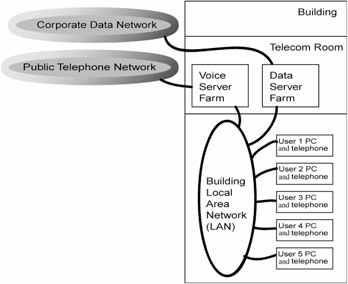3.5 Understand Your Technologies
|
| < Day Day Up > |
|
3.5 Understand Your Technologies
Perhaps you do not, but I know a few snake oil salesmen masquerading as technologists. Even if that is unfair, I decided a long time ago that I should know something about the technologies the team wants to roll out, if for no other reason than I can engage them in productive conversations. That gets them to open up, share any misgivings they might have, and work with you on appropriate resolutions. Besides, it is a lot easier to gain their respect and cooperation if you act interested in what they are doing. You might even be able to help them, as we shall soon see.
Instead of obsessing over your presumed ignorance, ask yourself exactly what you need to know about a technology to project manage it into reality. I believe you can do this by answering seven questions. These questions and their answers are presented in Exhibit 7 using IP Telephone as the technology straw man. When we started the project, all I knew about IP Telephone was that it was a new, LAN-based way of providing the telephone services you would expect to find in any modern corporate site.
Exhibit 7: Useful Questions for Understanding Technology
| What does it do? | IP Telephone provides traditional PBX or Centrex services, plus other features. |
| Why is it being used? | To demonstrate our commitment to new technology, and save money on infrastructure. |
| What are the key components? | Standard trunks to the public telephone network. Dedicated servers to route calls. Standard LAN switches and cabling. Desktop PC plugs into handset for LAN connectivity. |
| Will installing it be difficult? | We hired an experienced vendor. |
| Can Operations support this? | Installation value added reseller (VAR) will provide Tier II and Tier III support. Corporate voice help desk will be trained to provide Tier I support. |
| What is our Plan B? | We wired for a PBX as a contingency. |
| Do we have training requirements? | Training is planned to all users. Also, see Operations Support. |
A simple sketch of this analysis would look like the one shown in Exhibit 8.
Exhibit 8: IP Telephone Site Architecture

I deliberately focused on the pieces and parts relevant to the build-out. Exhibit 7 recounts cables, trunks, and circuits. It ignores the technologist's buzz, such as Lightweight Directory Access Protocol (LDAP), synchronizing with e-mail, and the alchemy of embedding one's mellifluous voice inside an IP packet and zipping it across a fast Ethernet wire between e-mails from the boss. Although that is fascinating to me, knowing it does not make me a better project manager.
Actually, I got the scoop on IP Telephone as shown in Exhibit 7 from the three project managers on our team who were responsible for product selection, telecom plant, and voice service rollout. Except for one glitch early on, this piece of a very complex and political project was one I felt comfortable with almost from the start. First of all, I had done a few voice and data projects before so, once I filled out the technology questionnaire for the IP Telephone, I felt I could deal with it. Far more important was the fact that these three project managers proved to me that they were up to the tasks at hand. That is a bonus of approaching the vetting process this way. It gives you the opportunity to evaluate technical people or managers while reviewing their technologies with them. It helps you determine who can be trusted and who just might require a little closer scrutiny.
It is also worth mentioning that the table holds project requirements, high-level tasks to rollout IP Telephone, a Plan B for the risk of it not working, and a postimplementation support strategy. That is not a coincidence, by the way. Requirements, tasks to accomplish them, task owners and dates, and real-time status are all you need to consider. If you decide, when the project is completed, that you want to become an IP Telephone guru, knock yourself out. But for now, stick to your job, which is making sure this thing is going to fly right side up and can land safely, too.
|
| < Day Day Up > |
|
EAN: 2147483647
Pages: 231